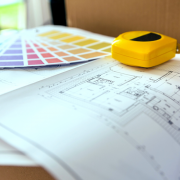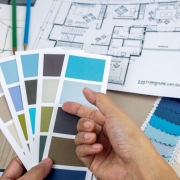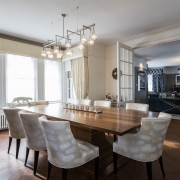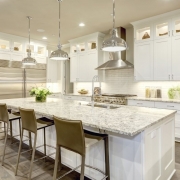Cost-effective home improvements to plan during lockdown
Use the time you’re spending at home to assess how your family live in and interact with your home – then plan how you can make it better. Here are some cost-effective improvements worth considering.
While we’re all spending much more time at home, we can become more aware of the things we would like to change about where we live. Working from home can highlight the need for multi-functional spaces, while having the whole family at home for extended periods can exacerbate space pressure.
Some home improvement tasks are still achievable during lockdown thanks to online retailers offering contactless delivery options, but many will require the assistance of a professional. Now is the time to start planning, so you’re ready to proceed when life starts to return to normality.
Remodel your interiors
By being immersed in your home, you can notice where the layout of your home could be improved. You might want to make your place more open plan by knocking down internal walls, or add stud walls to change the flow around your home.
Try drawing out ideas for a new layout (try to scale) to help in visualising the new space. You’ll also need to consider the flow of natural light and furniture placement.
Convert your garage
Taking on a garage conversion is a really cost-effective way to add some more living space to your home, especially if you only use your garage as storage space for things that you probably don’t even really need.
A basic garage conversion costs around £8,000 and if done well, can add up to 20% to the value of your home. You can also normally convert a garage under permitted development rules (if you live in a listed building or designated area, you may need planning permission).
(MORE: Planning Permission guide)
Convert your loft
A loft conversion is a very cost-effective way to add extra space, if your current roof pitch and structure lend themselves to conversion. If they don’t, it’s still possible to convert your loft, but it’ll be much more expensive than a room-in-the-roof conversion which will cost around £15,000.
There are lots of things to consider when converting a loft, so now is the time to plan how you might heat, insulate and access the new space, as well as checking Building Regulations stipulations.
(MORE: How to convert your loft)
Add an outbuilding for a home office
If you are able to work from home during the lockdown, you may decide that you want to do it more in the future. If this is the case, then you’ll need to find a suitable place for a dedicated home office. Working from the corner of a spare room can be suitable in the short term, but isn’t really practical as a permanent option.
A garden room or outbuilding can make a great home office – it’s separate from the rest of your home so you can avoid unnecessary distractions. You will need to make sure it has sufficient electricity supply and sockets, suitable heating and lighting options, and reliable internet access.
Build an extension
If you want to add significant additional space to your home but you’ve already made the best use of existing footage, building an extension can be a cost-effective option (and is certainly cheaper than moving to a bigger property).
You might also find it’s more cost-effective to build a two-storey extension rather than a single storey.
(More: Home extensions: dos and don’ts)














Leave a Reply
Want to join the discussion?Feel free to contribute!